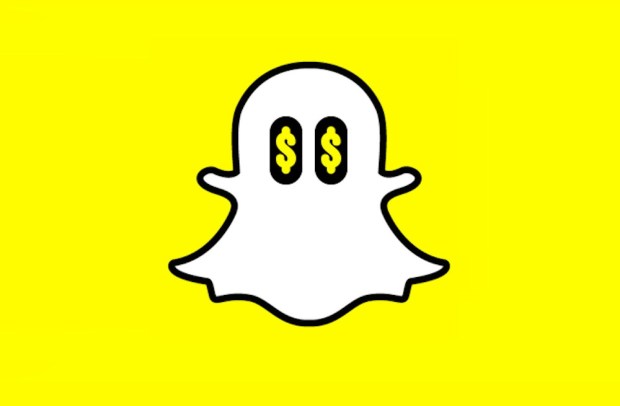Is Snapchat The Future Of Commerce For Brands?

So, how can you get your hands on the newest and hottest pair of Warby Parker shades — a “head-turning Haskell in Crystal, now with new silver mirrored lenses” that’s retailing for $95?
Nope, you won’t be able to purchase them at WarbyParker.com or anywhere on the hip eyewear purveyor’s burgeoning list of brick-and-mortar retail stores.
No, the only way you can get your hands on these “exclusive” bad boys is if you follow Warby Parker on Snapchat, where the brand shared a Snapchat story with its followers containing a URL taking users to a page where they could purchase the super-limited edition frames, according to TechCrunch.
But if you really want to get your hands on these glasses, you’d better hurry, because Warby Parker says, “Once they’re gone, they’re gone for good. (This is a Snapchat exclusive, after all.)”
Even if you’re not in the market for a new pair of sunglasses and even if you don’t use Snapchat, this new product offering and collaboration between one of the hottest new retail brands and one of the hottest new social media platforms of the past few years does suggest a window into ways that more and more brands might be able to begin leveraging the unique, engaged and mobile-savvy audience you typically find on Snapchat to commercialize and monetize their own brands and products.
Snapchat Cofounder and Co-CEO Neil Blumenthal told TechCrunch that the brand was eager to experiment with this unique product offering via Snapchat because of the social media platform’s uniqueness.
“Snapchat’s Lenses, Geofilters and Stickers separate it from other social networks by making communication more creative, fun and casual,” Blumenthal told TechCrunch via email. “These unique tools translate to commerce and align with our philosophy that shopping should be fun, especially when shopping for a highly social accessory, like glasses, which everyone immediately sees on your face and invites conversation. Offering this limited-edition pair of glasses to our Snapchat followers seems like a no-brainer as we strive to make buying glasses as enjoyable and convenient as possible.”
So, retailers should expect to see more brands offering similar “exclusive” content via Snapchat in the future, as more and more brands get more and more comfortable and experienced using the platform.
If you don’t know how to use Snapchat, here’s a quick refresher course: Snapchat is an image sharing and messaging app founded by some Stanford students.
To use Snapchat, you need to download the app, set up an account and upload a profile picture (this also gives you an opportunity to experiment with taking your first Snap). Once you’re all set up, you can then either send other users Snaps, which are standalone photo or video messages, or post Stories, which are viewable by all of your “friends” on the app for 24 hours. Stories can contain multiple photos or videos in succession of one another.
Once you get more experienced with Snapchat, you can begin to experiment with a bunch of cool features, like adding Snapchat Lenses, Geofilters and Stickers to your posts to make them more unique and fun.
It’s a unique concept that has caught on like crazy, primarily with the 13–24 demographic. TechCrunch claims to have gotten its hands on some of Snapchat’s insider investor information in May that pegged the company’s value at around $18 billion to $20 billion and revealed that Snapchat had 110 million daily active users as of Dec. 2015 who were sharing about 10 billion video views per day.
That sounds like the type of audience that a lot of brands and retailers would be very happy to connect with.
But perhaps what’s most surprising about Snapchat — other than its meteoric rise to become the social media platform of choice among 18–24-year-olds — is the surprising level of active engagement with the mobile device it seems to generate in users.
The New York Times assigned a team of journalists to “experiment” with Snapchat in May 2015, and the writer of the piece — Talya Minsberg — said she was surprised to discover that the app was so much more than just a bunch of teenagers sharing silly selfies with each other.
“For starters, once you really take a look at Snapchat, you realize that most of your preconceived notions of the mobile app are false,” Minsberg wrote. “There are really creative individuals and organizations making some pretty compelling stories on Snapchat, and watching a story on Snapchat is less passive than you may think. When you are watching a story, you have to hold your finger down on the screen.”
Now, if advertisers could find a way to “reach out” to or connect with Snapchat users in the middle of these Stories — and many brands are experimenting with very creative ways to do just that — it could prove to be a retail goldmine.
Heck, even stuffy, old GE was an early Snapchat bandwagoner. GE hopped on Snapchat in July 2014 to share some Snaps with astronaut Buzz Aldrin, celebrate the 45th anniversary of GE’s contribution to the moon landing and unveil the uber-exclusive The Missions sneaker, designed to mimic the boots that astronauts wore during the first moon landing.
Snapchat is not going away. In fact, it only seems to be growing in popularity and age appeal. Brands and retailers would be wise to realize this and at least begin experimenting with ways to dip their toes into this unique social media platform.
Warby Parker certainly has.
